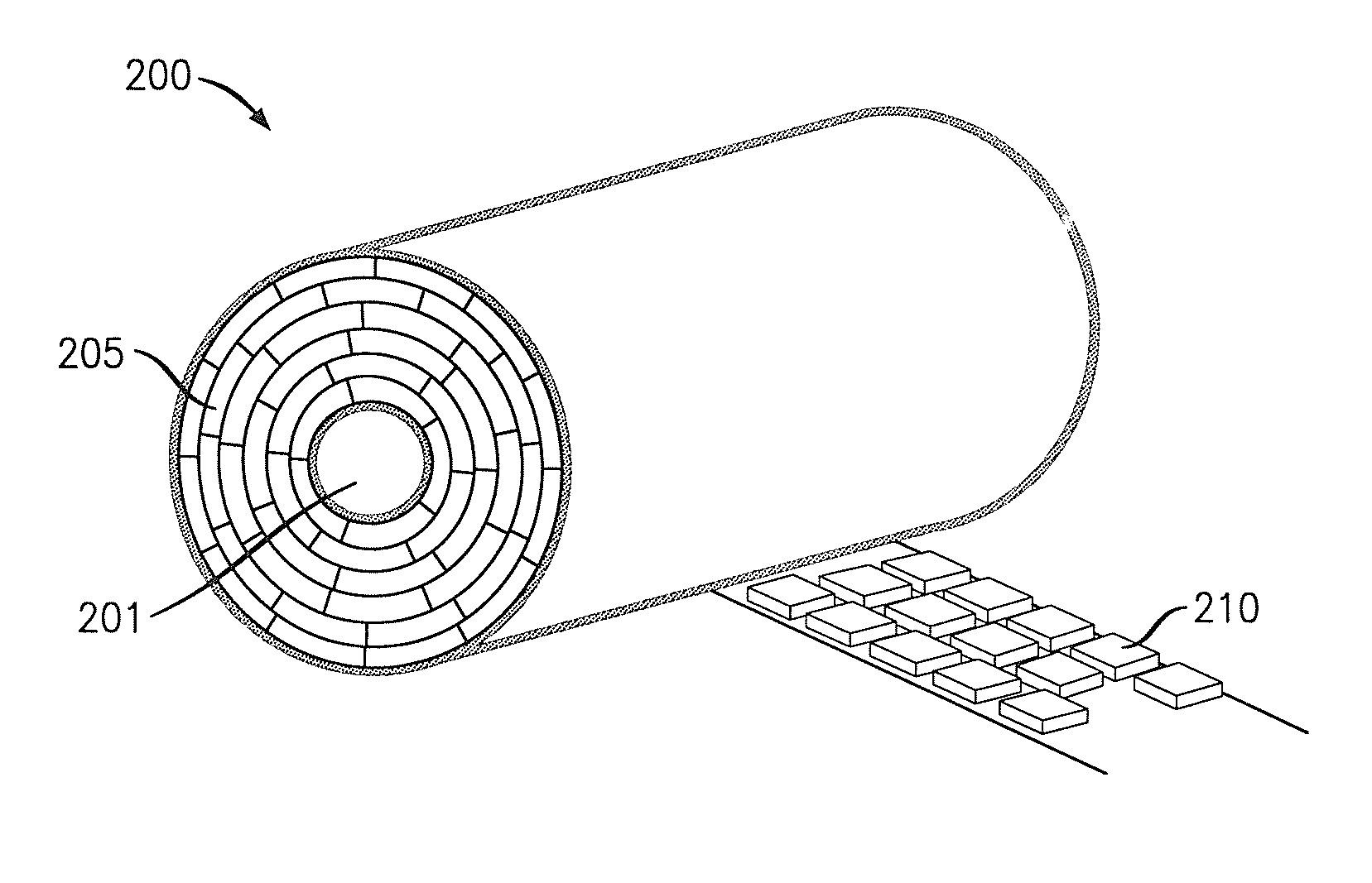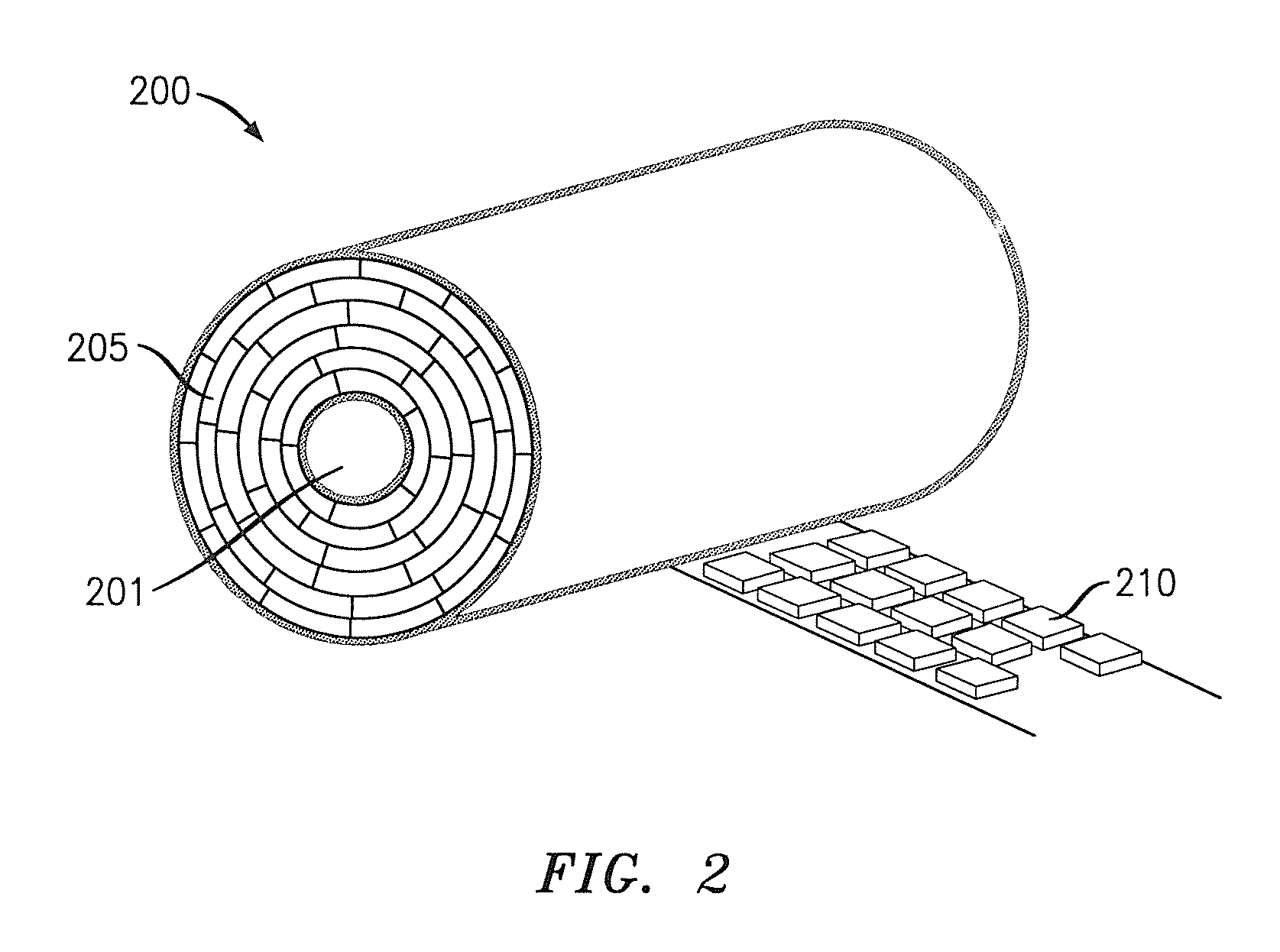Structured dielectric for coaxial cable
a technology of coaxial cable and dielectric, which is applied in the direction of power cables, cables, insulated conductors, etc., can solve the problems of air-filled cable electrical performance deterioration, signal may experience attenuation, and cable bending
- Summary
- Abstract
- Description
- Claims
- Application Information
AI Technical Summary
Benefits of technology
Problems solved by technology
Method used
Image
Examples
Embodiment Construction
[0030]Referring now to the drawings, in which like numerals refer to like components or steps, there are disclosed broad aspects of various exemplary embodiments.
[0031]FIGS. 1A, 1B, and 1C show cross-sectional views of structured dielectric layers. The three coaxial cables 100, 110, and 120 depicted in FIGS. 1A, 1B, and 1C, respectively, share three common elements.
[0032]First, an inner conductor 101 is located in the center of each cable 100, 110, 120. Inner conductor 101 may be fabricated from an electrically conductive metal. It should be apparent that any electrically conductive metal may be used according to cost and design requirements. Thus, in various exemplary embodiments, the metal used for conductor 101 is copper, silver, copper-plated aluminum, or any other conductive metal.
[0033]Second, an outer conductor 102 defines the circumference of each cable 100, 110, and 120. Outer conductor 102 may consist of braided copper wire. However, it should be apparent that any electric...
PUM
| Property | Measurement | Unit |
|---|---|---|
| dielectric constant | aaaaa | aaaaa |
| dielectric constant | aaaaa | aaaaa |
| relative permittivity | aaaaa | aaaaa |
Abstract
Description
Claims
Application Information
 Login to View More
Login to View More - R&D
- Intellectual Property
- Life Sciences
- Materials
- Tech Scout
- Unparalleled Data Quality
- Higher Quality Content
- 60% Fewer Hallucinations
Browse by: Latest US Patents, China's latest patents, Technical Efficacy Thesaurus, Application Domain, Technology Topic, Popular Technical Reports.
© 2025 PatSnap. All rights reserved.Legal|Privacy policy|Modern Slavery Act Transparency Statement|Sitemap|About US| Contact US: help@patsnap.com



